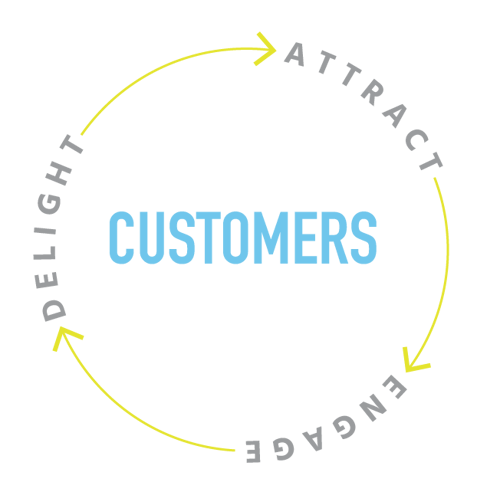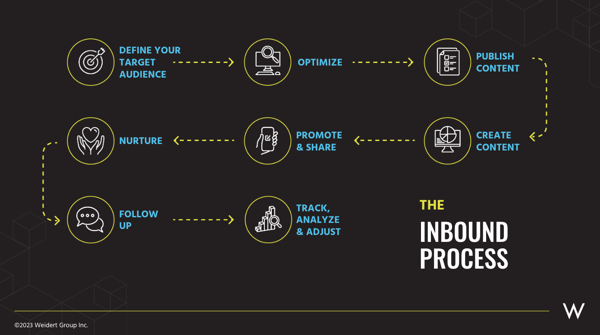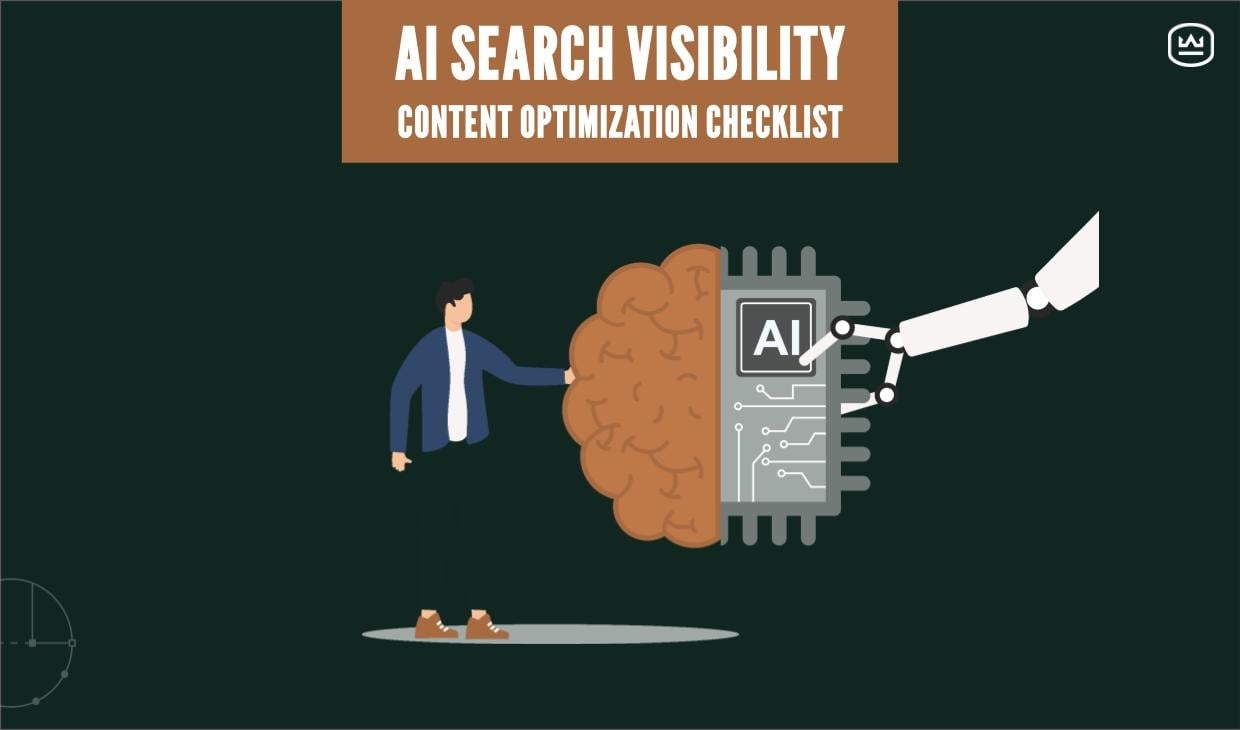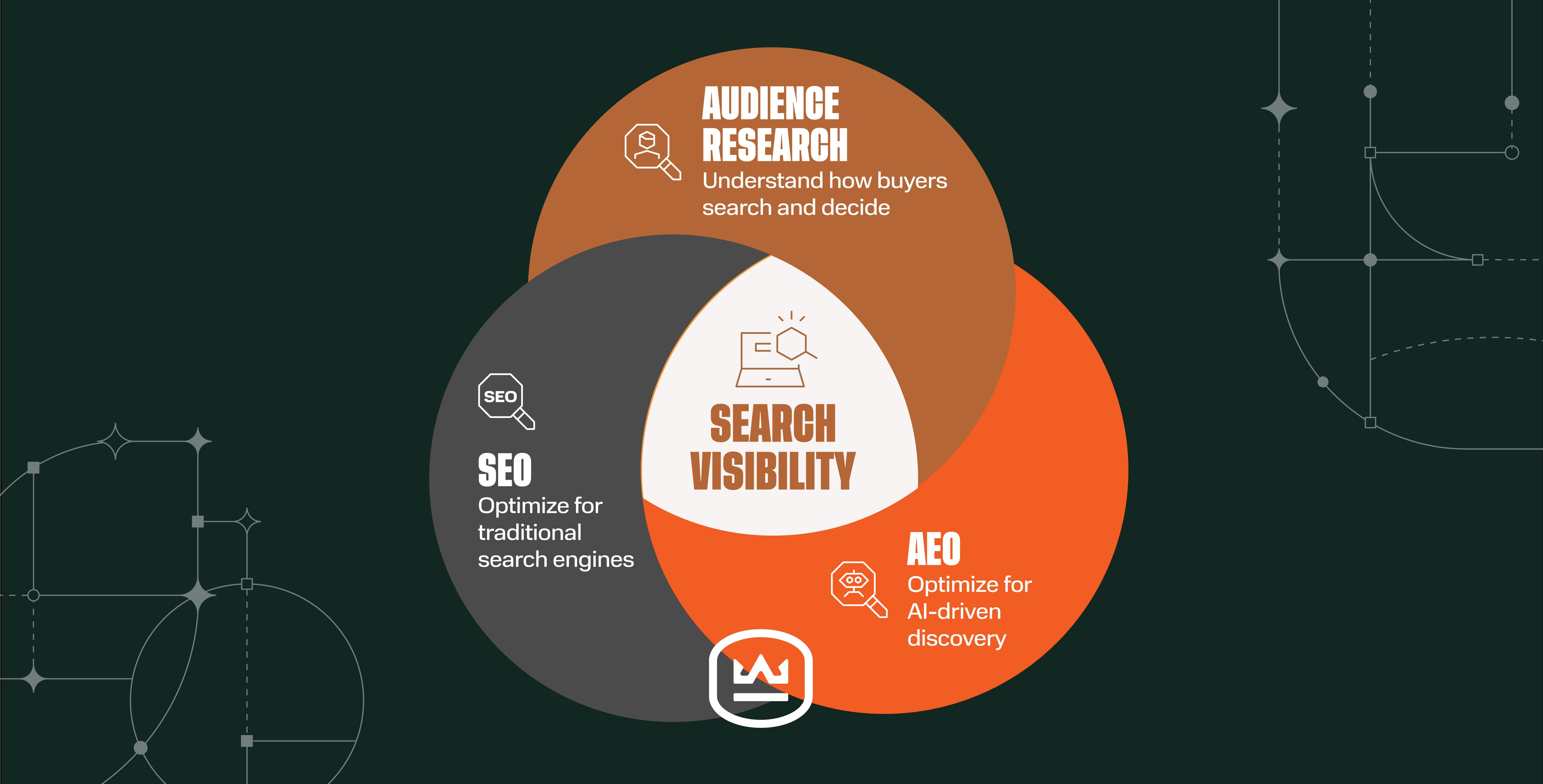Inbound vs. Outbound Marketing: What’s the Difference?
Written by
It’s estimated that the average person is exposed to between 6,000 and 10,000 advertising messages every day.
That includes everything from TV ads and outdoor signage to radio spots and digital ads throughout the internet and social media – that’s a lot of competition for your prospects’ attention. It’s enough to get B2B marketers to ask themselves how to better attract customers through effective marketing efforts — then get them to buy.
Today, there are essentially two distinct marketing strategies used to reach their potential customers: inbound marketing and outbound (or “traditional”) marketing. Let’s take a look at the primary differences between the two.

The Differences Between Inbound and Outbound Marketing
INBOUND MARKETING
- Pulls in interested readers
- Solves prospects’ needs
- Interacts with readers/viewers
- Creates leads from content consumers
- Seen in websites, blogs, eBooks, opt-in emails, SERP, social media
OUTBOUND MARKETING
- Pushes messaging at everyone
- Is written to sell products
- Consists of one-way communication
- Disrupts whatever content is being consumed
- Seen in TV ads, billboards, pop-up internet ads, telemarketing, magazines
What is Outbound Marketing?
Outbound marketing, also referred to as “interruption” or “push” marketing, uses tactics that send a message to a large number of people in an effort to make a sale.
Print/TV/radio advertising, cold calling, direct mail, mass cold email campaigns, and other methods are aimed at large audiences of people, whether they’re looking for your product or not. It’s a one-way conversation that typically focuses on the products or services and reasons the audience should buy it.
The Problems with Outbound Marketing
The big problem with traditional marketing is that in order to be appropriate for the largest number of people, the message must be very broad and general. In other words, it’s impossible for outbound to be relevant to specific needs and challenges.
There are other reasons traditional marketing isn’t working today:
- 79% of surveyed TV viewers take out their phone or other device during commercial breaks.1 Plus, with the growing number of online TV streaming services, television ads can be skipped, and you can’t make an impression on your audience if they’ve tuned out
- Digital music services and satellite radio make it easy for listeners to avoid radio advertising. As of March 2023, there were over 500 million active Spotify users.2 Many of those listeners even opt to pay for Spotify Premium, which is ad-free
- Only 42.2% of direct mail recipients read or scan the mail they receive.3 Referred to as “junk mail,” this tactic has low effectiveness
- The average person gets bombarded with more than 1,700 banner ads per month.4 That’s an awfully big net that’s likely not very targeted
- The average office worker receives 120 emails every day.5 Quite a bit of that is likely spam, so people often tune out most emails
- Ad blocking usually costs publishers 15-30% in ad revenue6
Pushing messages out isn’t effective anymore because your audience has options and ways to avoid them. Marketers who are still using outbound tactics are asking themselves: 1) “How do we reach buyers who are looking for our solutions?” and 2) “What will it take to turn those prospects into customers?”
There’s a way to bring your prospects to you and turn them into customers. Hint: Google processes an estimated 5.6 billion searches per day.7
What is Inbound Marketing?
While outbound marketing pushes messages to a wide audience, inbound marketing is “magnetic” and geared toward a target audience. Rather than sending out general messages to uninterested audiences, inbound marketing allows you to attract your best prospects — and those who are actively looking online for solutions.
When they get to your site, those prospects find help, guidance, and education directly related to the searching they’re doing online.
And that’s where you see some of the components of the inbound marketing flywheel (Attract, Engage, and Delight) in action.

At the heart of inbound marketing is content: blog content, video content, and downloadable (or “advanced”) content offered on a company’s website, such as white papers, guides, eBooks, tip sheets, and others. And creating content with search engine optimization (SEO) in mind gives you an even greater chance of getting discovered by interested prospects.
RELATED: SEO is a whole topic in itself. Learn some of the SEO basics!
When using an inbound approach, marketers develop this content to align with specific points in the buyer’s journey:
- At the beginning of their journey, a buyer is getting familiar with the problem and potential solutions
- In the middle, they’re comparing a small set of potential solutions
- At the end of their buying journey, they’re doing due diligence needed to make a final decision
- Then there’s the actual customer experience, where delighted customers can turn into promoters
There are types of content that align nicely with each of these stages. By creating and offering them via your website, blog posts, and advanced content, you’re satisfying information needs that prospects have at all points in their journeys.
And, since a journey is largely conducted online, they’ll find relevant content when doing searches.

An Example of Inbound Marketing in Action
You’re the facilities manager of a disposable tissue manufacturing company, and you’ve decided that it’s time for a new conveyor for the company’s XYZ line of products.
Your first step toward purchasing new equipment is to do research online to understand your options. Not surprisingly, you Google “conveyor systems with best output.” High on the search engine results page (SERP) is an eBook entitled “5 Ways a Cylindrical Conveyor Improves Productivity & Output.” You click on the link, get to a vendor’s blog, and read it.
At the end of the post is an offer of downloadable content related to conveyor output, so you provide your email in exchange for the content.
You’re now a lead in that vendor’s system. The vendor is able to directly send you additional content offers to draw you further into the sales funnel. As a facilities manager, you’re eager to engage with this vendor because you now have evidence of this company’s expertise and appreciate the useful information they’ve provided.
While traditional marketing sends general messages to a wide (and often uninterested) audience, inbound marketing creates and offers relevant content developed specifically for distinct audiences.
Prospects are attracted to that content as they conduct research related to their challenges, and once they find it on a supplier’s site, they become engaged in a conversation with that supplier.
Ready to Implement Inbound Marketing?
Now that you have an idea of why inbound marketing is such a valuable method to growing your business, why not get started right away?
We’ve gathered the tools and information you need to help you begin your new journey into attracting, engaging, and delighting customers — all in one handy page. Click the link below for this collection of resources, and don’t forget to bookmark it for your future reference!
Subscribe To Our Blog
Information. Insights. Ideas. Get notified every time a new Weidert Group blog article is published – subscribe now!
You May Also Like...

Search Engine Optimization
How Falcon Rebuilt Industrial AI Search Visibility in 2025

Search Engine Optimization
The New Search Visibility Checklist for AI-Era Content Marketing

Search Engine Optimization
SEO Isn’t Dead. It’s Evolving: How B2Bs Can Stay Visible in the Age of AI
Accelerate Your Growth with
Weidert Group
If you’re ready to explore a partnership, request a personalized consultation with our team.

